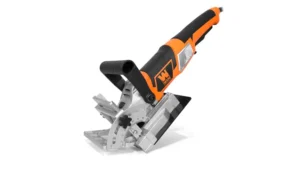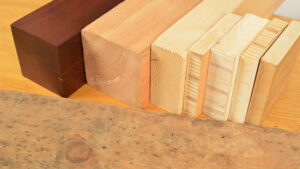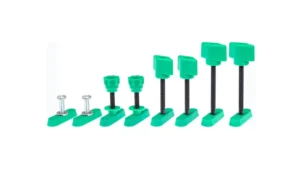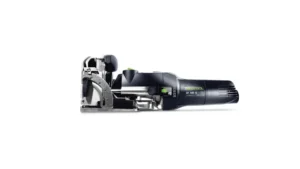Composite vs. Wood Decking 2024
- August 7, 2023
- 0 comment
The deck you select can turn your outdoor space into a masterpiece, affecting your home’s visual appeal, utility, and overall value. In this in-depth look, we focus on two top contenders in the decking game: Composite and Wood. By delving into their key features, strengths, weaknesses, and unique qualities, we aim to equip you with the knowledge you need to make the best decision for your outdoor oasis.
Composite Decking: The Future of Outdoor Living?
The composite decking material is truly a marvel of modern engineering. It’s an ingenious combination of plastic and wood fibers that creates a product capturing the strength of both its constituents, thereby offering the best of both worlds. This novel blend of materials yields a product that provides the aesthetics of wood while leveraging the durability of plastic. With its growing popularity, composite decking is reshaping the way we conceive outdoor living spaces.

The wood fibers used in composite decking give it a natural appearance and texture, making it appealing to those who love the look and feel of traditional wood but crave enhanced durability. These fibers, typically sourced from waste wood like sawdust and wood chips, are carefully treated and then mixed with plastic, usually high-density polyethylene (HDPE) or polyvinyl chloride (PVC). This blend is heated and extruded into the shape of boards, offering a sturdy, uniform product with excellent structural integrity.
Durability and Longevity
These are crafted to withstand the elements, be it the sun’s harsh UV rays, heavy snow, or drenching rain. Their durability ensures resistance against rot, warping, and insect invasion. What’s more, they’re not prone to splintering, providing a safer space for bare feet and pet paws.
Maintenance
Virtually eliminates the tedious upkeep associated with traditional wood decks. A simple sweep and occasional wash with soap and water will suffice, freeing up your time for more relaxing pursuits.
Cost and Value
The initial price tag for composite decks is higher than that of wood. However, the absence of regular maintenance and repair costs can make it a cost-effective solution in the long run.
Wood Decking: The Charm of Authenticity
When it comes to decking, many homeowners find themselves drawn to the traditional charm of wood. Known for its timeless aesthetics and the unique character that it brings, wood decking has a rich history and offers a classic look that composite materials strive to emulate. It harks back to a simpler time, evoking memories of old family houses and leisurely summer afternoons spent basking in the warmth of the sun.

Wood decks provide a level of authenticity and warmth that man-made materials can find hard to replicate. Every plank is unique, bearing the marks of its growth – knots, grain patterns, and color variations – creating a tapestry of natural artistry that brings an element of uniqueness to your outdoor space. Whether stained, painted, or allowed to gray naturally, wood decks add a level of sophistication and elegance that can elevate the aesthetics of your home.
Durability and Longevity
With the right maintenance, wood decks can stand the test of time. However, they are susceptible to splitting, cracking, and warping. Insects and weather elements can also damage wood, leading to potential durability issues.
Maintenance
Wood decks require more upkeep than their composite counterparts. Regular staining or painting, along with sealing, is necessary to keep them in good shape. This can mean more work, but some homeowners find joy in these routine care rituals, seeing it as part of the charm.
Cost and Value
While wood decks generally have a lower upfront cost, maintenance costs over the years can add up. However, a well-maintained wood deck can add significant value to your home.
Aesthetics and Environment – A Side-by-Side Comparison
Wood decks possess a unique allure, largely due to their natural and timeless beauty. The texture, grain, and warm hues of wood are often associated with a classic and rustic aesthetic, giving the outdoor space a serene, inviting ambiance. There is a certain charm and authenticity to wood that can’t quite be replicated, making it an appealing choice for traditional and nature-centric designs.

On the other hand, composite decking, while not able to perfectly mimic the authenticity of natural wood, has made substantial strides in this regard. Modern composite decks come in a wide array of colors, textures, and grain patterns that do an impressive job of imitating various types of wood. What composite may lack in absolute authenticity, it makes up for in versatility and adaptability. Composite decks can cater to an extensive range of designs and styles, from classic to modern, rustic to chic.
Creative Ideas: Beyond the Basics
Consider these unique ideas when choosing your decking:
1. Mixed Material Approach

The first idea pertains to utilizing both composite and wood in your decking project, taking advantage of the strengths of both materials. The core of the deck could be constructed from composite material, which offers superior durability and low maintenance. This means the structural elements of your deck would be resistant to rot, warping, and insect damage, and wouldn’t require frequent upkeep.
For the surface elements, railings, or seating areas where the warm, natural aesthetic of wood is more prominent, consider incorporating real wood. This way, you get to enjoy the classic appeal and authenticity of natural wood without worrying about its vulnerabilities to environmental factors. This approach creates a visually striking deck that’s both practical and aesthetically pleasing.
2. Personalized Design Patterns

The flexibility and malleability of composite material offer an opportunity to move beyond traditional linear patterns. Composite decking can be cut and shaped more easily than wood, opening up a myriad of design possibilities. You can curve composite to form circular decks or create stunning geometric designs. Laying the composite boards in a herringbone, diagonal, or chevron pattern could add a unique visual appeal to your outdoor space.
Additionally, composite decking comes in a wide variety of colors, allowing for more creative and personalized deck designs. You can use contrasting shades to highlight areas of the deck or create patterns that reflect your personal style and enhance the overall aesthetic of your outdoor living space.
3. Sustainability Matters

In the modern world, environmental sustainability is more than just a buzzword – it’s a responsibility. When selecting decking materials, consider the impact of your choice on the environment.
Opting for composite decking made from recycled materials is a wonderful way to promote sustainability. You can enjoy a durable, aesthetically pleasing deck knowing that you’ve repurposed plastic and wood waste that might otherwise end up in a landfill.
Alternatively, if you prefer wood decking, ensure that your wood comes from responsibly managed forests. Choosing wood that’s certified by an organization like the Forest Stewardship Council (FSC) ensures that the wood is harvested responsibly, maintaining the balance of our forest ecosystems.
Conclusion
Choosing between composite and wood decking is not a one-size-fits-all decision. It depends on your specific needs, aesthetic preferences, budget, and environmental beliefs. The contrasts between durability, maintenance, cost, and aesthetics need to be considered, enabling you to choose a decking material that harmoniously blends with your outdoor living space and lifestyle. With the right choice, your deck will be a source of pride and enjoyment for many years to come.
Frequently Asked Questions:
- What is the lifespan of composite and wood decks?
Composite decks can last 25 to 30 years with proper care, while the lifespan of a well-maintained wood deck is around 10 to 15 years. - Which type of deck requires more maintenance?
Wood decks generally require more maintenance, including regular staining or painting and sealing. Composite decks require only occasional cleaning with soap and water. - Are composite decks eco-friendly?
Yes, most composite decks are made from a mixture of waste wood and recycled plastic, making them an environmentally friendly choice. - Can composite decks mimic the look of real wood?
While composite decking has improved significantly in its ability to mimic the look of real wood, it may not fully capture the same authenticity that natural wood offers. - Is composite decking more expensive than wood?
Composite decking generally has a higher upfront cost than wood. However, considering the maintenance costs associated with wood, composite decking may be a more cost-effective solution in the long run. - Which decking material is more durable?
Composite decking is generally more durable than wood. It is resistant to rot, warping, and insect damage. - Do wood decks increase home value more than composite decks?
This can depend on the market and the buyers’ preferences. Some buyers might prefer the natural look of wood, while others might value the low maintenance of composite decking. - Can I install the decking myself or do I need a professional?
Both composite and wood decking can be installed DIY, but it’s recommended to hire a professional to ensure the deck is safe and properly constructed. - What are the common types of wood used for decking?
Common types of wood used for decking include pressure-treated pine, cedar, and redwood.
We’d love to hear from you! Share your personal experiences and opinions on Composite vs. Wood Decking for 2024 in the comments section below. Your insights could help homeowners and builders make informed choices!

David Murray
Forestry AuthorI'm David Murry, a forestry equipment specialist with a focus on chainsaw operation. With over 13 years of experience, I've honed my skills in operating and maintaining a wide range of machinery, from chainsaws to log splitters. My passion for the outdoors and commitment to sustainable forestry drive my work, which emphasizes safety, efficiency, and staying updated with industry advancements. Additionally, I'm dedicated to sharing my expertise and promoting environmental awareness within the forestry community.













Leave your comment